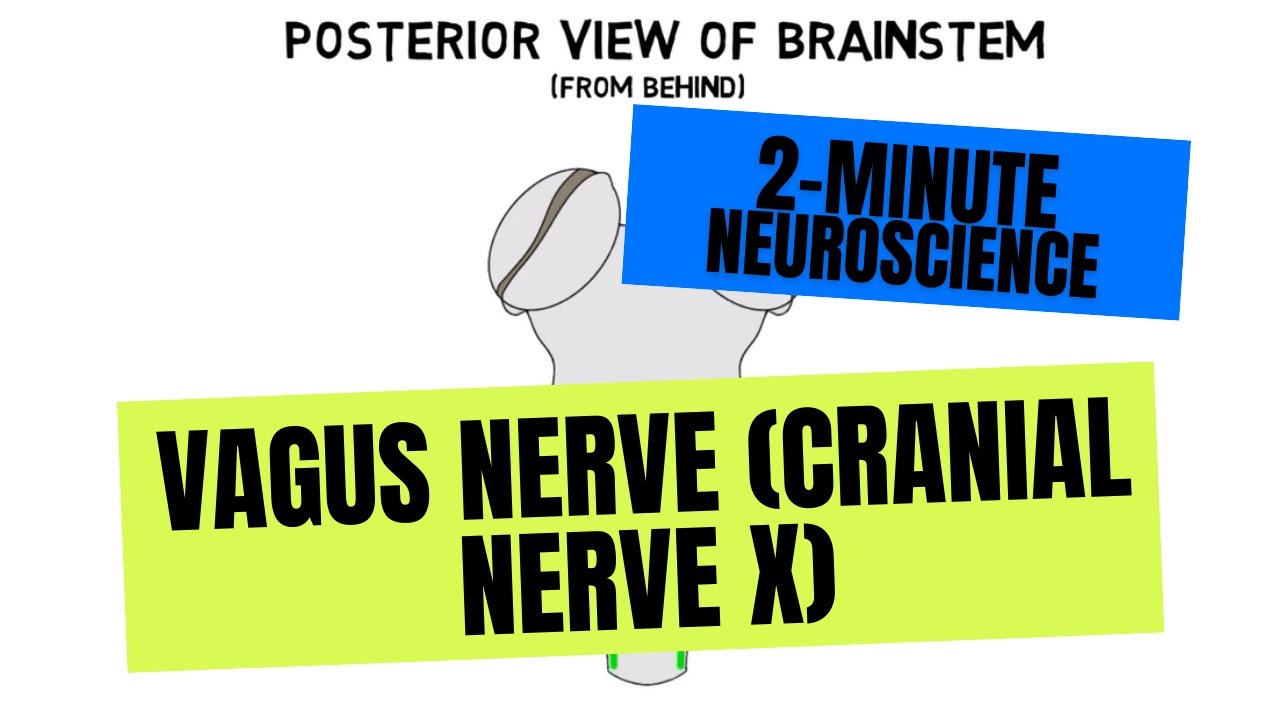The Vagus Nerve: Unravelling The Mysteries Of The BodyMind.

Have you ever wondered about the intricate pathways that allow your body to function seamlessly?
Well, let me introduce you to the vagus nerve, a fascinating and influential component of our physiology. Aptly named after its wandering nature, the vagus nerve meanders through our body, connecting various organs and facilitating vital communication and control.
Join me on this journey as we explore the wonders of the vagus nerve, from its anatomy to its remarkable functions that contribute to our overall well-being.
First, let's dive into the anatomy of this extraordinary nerve. Watch this great video tutorial
Known as cranial nerve X, the vagus nerve is the longest cranial nerve in our body. It originates in the brainstem, specifically in the medulla oblongata, and extends its reach all the way down to our abdomen. Along this incredible journey, it branches out, creating a vast network of nerve fibers that innervate organs such as the heart, lungs, liver, stomach, and intestines.
Now, let's uncover the multifaceted functions of the vagus nerve, which acts as both a messenger and a controller within our body:
- Heart Rate Regulation: The vagus nerve plays a pivotal role in maintaining a steady heart rate and cardiovascular balance. It acts as a skilled conductor, slowing down the heart rate during moments of relaxation or rest. Additionally, it aids in lowering blood pressure by promoting vasodilation, ensuring a harmonious flow within our circulatory system.
- Breathing Control: Picture the vagus nerve as a maestro orchestrating the rhythm of our breath. It exerts its influence on our respiratory system, modulating the depth and pace of our breathing. By doing so, it helps us achieve an optimal balance of oxygen and carbon dioxide in our bloodstream.
- Digestive Harmony: Prepare to be amazed by the vagus nerve's involvement in our digestive system. It devotes a significant portion of its network to innervating our gastrointestinal tract. From stimulating the production of stomach acid and digestive enzyme secretion to regulating gut motility, the vagus nerve ensures that our digestion functions smoothly. Furthermore, it communicates feelings of fullness to our brain, contributing to appetite control.
- Bridge between Body and Brain: The vagus nerve acts as a vital communication link between our organs and our brain. It relays sensory information from organs like the gut, liver, and heart to our central nervous system, facilitating a constant dialogue. This connection is a crucial aspect of the gut-brain axis, influencing various facets of our mental and emotional well-being.
- Soothing Inflammation: Here's an extraordinary aspect of the vagus nerve—it possesses anti-inflammatory properties. When activated, it helps regulate our immune response, reducing the release of pro-inflammatory molecules and promoting an anti-inflammatory state. This exciting finding has led to investigations into vagus nerve stimulation as a potential therapeutic approach for inflammatory conditions such as rheumatoid arthritis and inflammatory bowel disease.
With NeuroPath Reset Method, we always focus on the Vagus nerve as an essential part of self regulation, healing and recovery. Some of you have experienced those effects when coming in for sessions and felt how quickly we can reset it.
There are other several methods that can influence the activity of the vagus nerve. Let's explore a few of them:
- Deep Breathing: Engaging in deep, slow breathing exercises can stimulate the vagus nerve and activate its calming effects. By taking slow, diaphragmatic breaths, you can increase the variability of your heart rate, promoting relaxation and reducing stress.
- Meditation and Mindfulness: Practices like meditation and mindfulness have been shown to enhance vagal tone, which refers to the activity of the vagus nerve. These techniques involve focusing your attention on the present moment, reducing stress and anxiety, and promoting overall well-being.
- Cold Exposure: Cold exposure, such as taking cold showers or immersing your face in cold water, can stimulate the vagus nerve. The sudden exposure to cold activates the body's stress response, leading to increased vagal activity and potential benefits such as improved mood and resilience.
- Exercise: Regular physical exercise has been associated with increased vagal tone. Activities like running, swimming, and cycling can help activate the vagus nerve, promoting its beneficial effects on heart rate, stress reduction, and overall autonomic balance.
- Singing and Chanting: Vocal activities that involve deep breathing, such as singing or chanting, can stimulate the vagus nerve. The vibrations produced during these activities can enhance vagal tone and promote a sense of relaxation and well-being.
- Vagus Nerve Stimulation (VNS): Vagus nerve stimulation can be performed through medical interventions involving the use of implanted devices. These devices deliver electrical impulses directly to the vagus nerve, modulating its activity. VNS has been approved for the treatment of epilepsy and depression, and ongoing research is exploring its potential benefits for other conditions.
- Acupuncture: Traditional Chinese medicine often includes acupuncture as a method to influence the vagus nerve and restore balance within the body. Acupuncture involves inserting thin needles into specific points on the body, stimulating nerve pathways and potentially affecting vagal activity.
- Breathing Exercises: Specific breathing techniques, such as the 4-7-8 breathing method, alternate nostril breathing, or resonance breathing, can help regulate the autonomic nervous system and enhance vagal tone. These exercises involve specific patterns of inhalation and exhalation, promoting relaxation and calming effects.
It's important to note that while these methods can potentially influence the vagus nerve, individual responses may vary. If you have specific health concerns or are considering any form of vagus nerve stimulation, it's advisable to consult with a healthcare professional to ensure safe and appropriate use.

